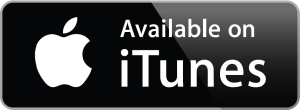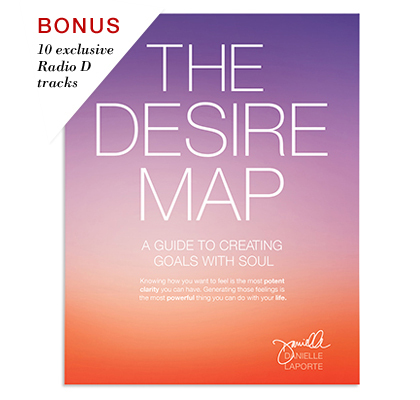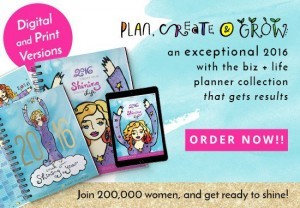Hannah Braime's Blog, page 20
March 24, 2016
#91: The Art of Transformation with Caroline Leon
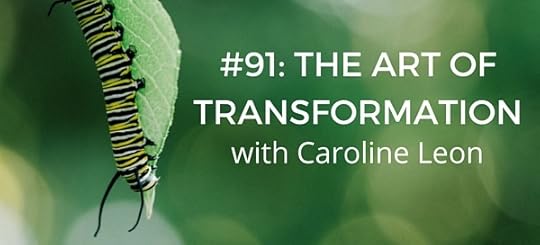
After a break at the beginning of this year, the podcast is back! In this episode, I’m sharing an insightful conversation with Caroline Leon about the art of transformation; especially why some of us seem to take transformation in our stride while others struggle to make the changes we want to make.
 Caroline is a personal transformation coach who supports people to live happier and more fulfilled lives. She loves nothing more than supporting others to live without limits and bringing groups of women together to support them to take bold leaps in the direction of their dreams.
Caroline is a personal transformation coach who supports people to live happier and more fulfilled lives. She loves nothing more than supporting others to live without limits and bringing groups of women together to support them to take bold leaps in the direction of their dreams.
Episode: The Art of Transformation with Caroline Leon
Topics we cover include:
The 3 ways we can relate to the world: co-dependence, independence, and interdependence
The key conditions for transformation, including openness and being ready and willing to accept help (through therapy and coaching)
How to relate to our fear when it comes to making big changes
The paradox of personal development: how to accept ourselves as we are, while being open to growth at the same time.
…and much more!
Share the Wisdom
“There’s so much gold to be taken from being interested in other people’s journeys.”
Click To Tweet
“Once you see what’s on the other side, you realise the thing itself is never as bad as the fear.”
Click To Tweet
“Fear is allowed in the car, but it’s not allowed to drive and it’s not allowed to read the map.”
Click To Tweet
“Struggle is part of the transformation process. The struggle is part of the journey.”
Click To Tweet
Useful Links
Connect with Caroline and share your experiences of transformation: lifeislimitless.com/transformation
The 7 Habits of Highly Effective People
Say Hello
Caroline
Twitter: @laughinglife7
Facebook: facebook.com/lifeislimitless
Website: lifeislimitless.com
Hannah
Twitter: @hannahbraime
Facebook: facebook.com/becomingwhoyouare
Website: becomingwhoyouare.net
Subscribe to the Podcast
Intro and outro: Stephanie Murphy
Image: Aaron Burden via Unsplash
March 2, 2016
8 Surprising Benefits of Writing Your Way to Better Health
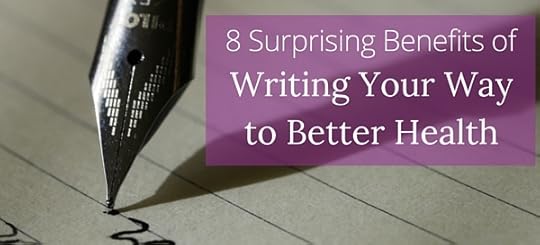
If you’ve been around Becoming Who You Are for a while, you probably know I’m a huge advocate of journaling. Most regular journalers experience the emotional benefits of writing: greater clarity, deeper self-awareness, a new perspective on things that are happening in our life, and more.
But alongside those emotional benefits, research suggests that journaling also comes with some pretty incredible benefits in other areas of our lives too, including our physical health and relationships. I outline some of these in one of the visual lessons of my Udemy course, How to Start Journaling for Personal Growth. Check out a summary of some of these benefits in the slideshow from this lesson below:
8 Surprising Benefits of Writing Your Way to Better Health
Why journal? 10 key benefits of a regular journaling practice from Hannah Braime
We’re most likely to reap these benefits with a regular journaling practice. I don’t know about you, but I find it motivating to know that, when I sit down to journal, I’m doing something that benefits so many different aspects of my life.
If you’re like me and need a little reminder of why consistency is so important in journaling, I’ve created an infographic highlighting these benefits. Save it for your own inspiration, or share to spread the word about just how powerful journaling can be :)
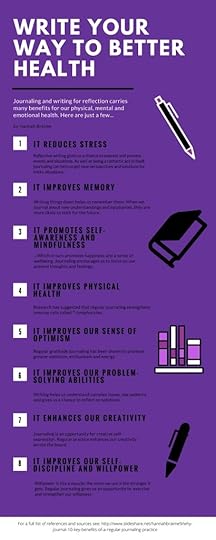
Your challenge this week: Set yourself the goal of journaling for at least 10 minutes a day for the next 7 days. What do you notice about this regular practice? How do you feel by the end of the week? Give it a try and see what happens!
Discover these 8 surprising benefits of putting pen to paper each day.
Click To Tweet
Further reading: 5 ways to inspire your journaling practice // healing and growing through journaling (interview with Susannah Conway)
 Want to experience the benefits of regular writing for yourself?
Want to experience the benefits of regular writing for yourself?Check out the rest of the course How to Start Journaling for Personal Growth. It will teach you everything you need to get started with a journaling practice that will deepen your self-awareness and enhance your personal development.
Inside the course, you’ll:
Learn everything you need to get started with journaling today
Discover different types of journaling to invigorate your practice
Identify the journaling techniques that will deepen your personal development
Explore your inner world through regular journaling, and find out how to revisit old entries for greater insight and awareness
Transform your journaling insights into real-life change
By the end of the course, you’ll have 10 different journaling techniques in your toolbox and the opportunity to put them to use with fun and insightful writing challenges.
Find out more and register here.
Image: Aaron Burden
February 22, 2016
9 Simple Suggestions for Blissful Self-Care During Winter
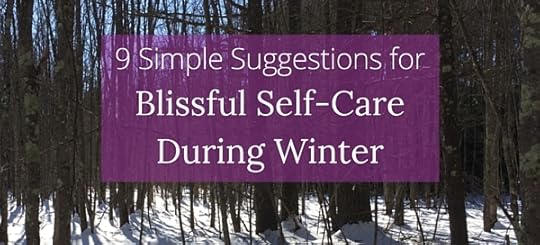
With Christmas and New Year far behind us, we’re now in the sticky middle of winter. For most of us, spring is still a couple of months off and the inclement weather, dark nights and cold can drag. Self-care during winter is more important than ever, especially for people who find their mood and sense of well-being are influenced by weather.
After having conversations with a couple of clients about this topic recently, I thought it might be helpful to share some of my favourite winter self-care suggestions alongside others crowd-sourced from the wonderful folks inside the Becoming Who You Are Facebook group (not a member? Join us here).
Stuck for winter self-care suggestions? Find 9 simple ways to take care of yourself here.
Click To Tweet
9 simple suggestions for self-care during winter
1. Keep moving
It’s cold. It’s dark. It’s uncomfortable. But we will feel so much better if we make time to move and get our blood pumping each day. If it’s too cold or icy to stick to your usual routine, get creative. A few winters ago, I used the season as an opportunity to try hot yoga for the first time. Alternatively, work out from the comfort of your own home or try a new community class.
2. Leave the house
Getting outside is important all year round, but especially during winter. Vitamin D is crucial for the health of our bones, among other important things, and it’s not naturally found in many foods. The only way we generate it is by exposure to UV rays (sunlight), eating fortified foods, or through taking special supplements.
Someone in the Facebook group raised the importance of making time to get out of the house and do something enjoyable, rather than only when necessary. One of the most popular suggestions that combines 1 and 2 was bundling up and going for a walk. If your local route isn’t that nice, pair your outing with some peppy music, a podcast or your favourite audiobook for greater enjoyment. Alternatively, if spending time in nature is on your When Life Works list, find somewhere you can stroll in peace and connect with your thoughts.
3. Get comfortable
Pick up a fluffy robe and cozy socks. Make a steaming mug of tea, light candles, stoke the fire, and focus on comfort. Surround yourself with colours, particularly if outside is looking grey. Get a few indoor plants to remind yourself that nature will bloom again soon.
4. Swap comfort foods for wholesome foods
When winter leaves us feeling low in energy and mood, it can be tempting to turn to comfort food, only to feel worse later on. If this applies to you, notice what you’re craving and dig deeper: what is the true emotional need underneath this feeling?
While some kinds of food can be coping strategies, other kinds can be genuine self-care. Make time to nourish yourself from the inside out, help your immune system fight off the colds and flu that abound at this time of year, and make the most out of winter-only seasonal produce.
5. Maintain personal habits
When 90% of your body is covered by thick layers of thermals and wool, it’s tempting to let a few personal habits/aesthetic maintenance activities slide during the winter. Everyone has different ways of taking care of themselves on an appearance level and different things that leave them feeling good.
If you know you feel better after shaving your legs, keep doing it even if they’re ensconced in thermals all day. If you enjoy getting manicures during the summer, make time for that every now and again, even if your paws are going to spend all day in mittens. What matters most about these things isn’t what you look like, but how it makes you feel.

6. Find ways to embrace and enjoy winter, rather than just enduring it
It’s no secret I don’t enjoy winter, and the last few years I’ve deliberately set up my life in such a way so I can avoid it as much as possible by travelling to warmer climates.
I also know that how I feel about winter is deeply influenced by how I think about it. The more I think “Urgh, winter” and focus on all the aspects of it I don’t like (the cold, the rain, more cold, so much cold), the worse I feel about it. The more I think about all the things I kind of enjoy however (festive lights! the possibility of snow! feeling warm and cozy under a blanket!), the more I can live with it.
It’s a simple mindset shift, but it makes a huge difference. If you find yourself dwelling on all the reasons winter is the worst, challenge yourself to name a few things that are kind of fun too.
7. Get creative
Use the inclement weather and long, dark nights to start a new hobby, try something you’ve been wanting to try for a while, or to enjoy uninterrupted reflective time. Getting creative is one of the ultimate mood boosters, and the winter is the perfect time to start a daily creative practice.
Try using quiet winter mornings to write, journal and reflect. Think of creative activities you’ve enjoyed in the past and re-introduce some of those into your days. If you find yourself sitting in front of the TV or aimlessly browsing online, set yourself a reading challenge and revisit some of your favourite books.
8. Follow nature’s patterns
A member of the Facebook group mentioned they use winter for symbolic tidying, thinning out and weeding in their garden. Why not adopt nature’s cycles into our own lives too? The slower, reflective winter months can be great for reviewing, assessing and clearing out the things that no longer serve us, making room for the new opportunities, energy and life that comes with the spring.
9. Respect your natural rhythms
There is no right way you should feel during winter, so embrace your you-ness. If you notice you feel more reflective during the winter months, use that. If you notice the urge to slow down and hibernate, do it. If you need to sleep more, snooze away.
Everyone is walking to the beat of their own drum, so be mindful of urges to compare yourself to others, and practice reconnecting with and noticing your own energy levels and internal patterns. We tend to criticise (or even pathologise) ourselves when our true experience and our expectations for what that experience should be don’t match. But it’s usually our expectations that are the issue, not our true experience. I know I tend to feel far more energised and brighter during the summer, but that doesn’t mean the way I feel during the winter is somehow bad or wrong—it’s just different. Rather than fighting any kind of slow down or shift, find ways to respect, embrace and use it.
What are your favourite suggestions for self-care during winter? Leave a comment and share your thoughts!
Further reading: 10 powerful books on self-care that will enrich your life & creating daily opportunities for self-care
Join the Becoming Who You Are community for free access to our library of DIY personal development tools. Inside, you’ll find tools and resources on authenticity, goal-setting, self-kindness, journaling, creating meaning and purpose, and more.
Enter your email below for immediate access:
Email
*
First Name
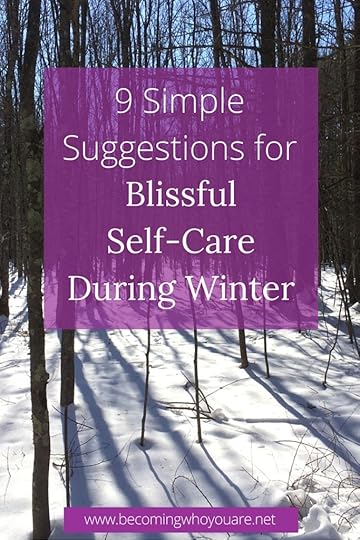
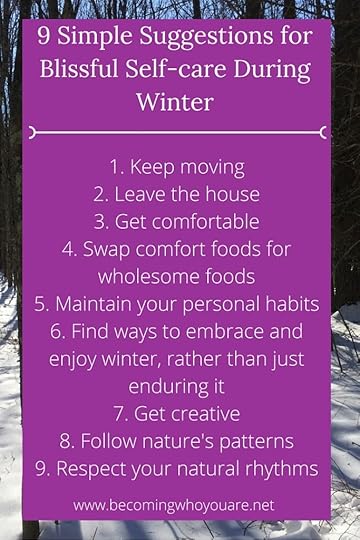
The post 9 Simple Suggestions for Blissful Self-Care During Winter appeared first on Becoming Who You Are.









February 15, 2016
Why I Don’t Talk About Self-Love
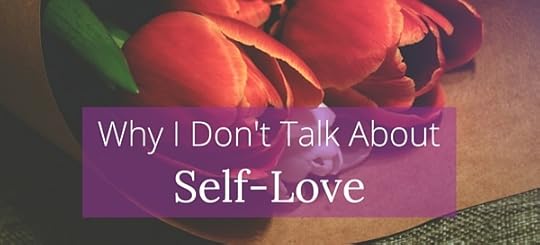
Yesterday, more people in this part of the world were musing over the topic of love (and self-love) than any other time of year. It left me reflecting on why I don’t talk about self-love here on Becoming Who You Are, and I want to share a few thoughts about that today.
Part of the reason is it’s difficult to define. Love means different things to different people. In the personal development world, self-love is often used to describe an idealised alternate reality; one in which we feel only positive feelings towards ourselves and experience a kind of enlightened internal nirvana.
Here’s the truth: I do not always feel self-loving, nor do I think I need to.
Self-love can feel like a lot of pressure for those of us who have a more—let’s say—complicated relationship with ourselves. This doesn’t mean I believe the voice that tells me I’m not good enough, that I’m lazy, or that other people are probably thinking mean things about me. Not at all.
Some of the times I am kindest to myself are when I feel least self-loving, because that’s when I know I most need that kindness. Some of my deepest learning comes from the times when I struggle most with self-love, because those times are where the lessons lie. But I also don’t need to wait for that voice to disappear entirely, or to be 100% free of internal conflict, to create meaning, fulfilment and happiness within my life.
You don’t need to experience self-love to create meaning, fulfillment and happiness in life.
Click To Tweet
The aim of personal development isn’t to strive for perfection, nor is it to be some kind of superhuman. When I first became interested in personal development, I was in a dark place and my goal was to get out of that dark place. At the time, I had all kinds of notions about how that would mean being immune to hurt, pain, frustration, ambivalence, uncertainty, discomfort, anger, rejection, and everything else we struggle with as humans.
But this doesn’t happen. Because we are human. When we try to shut out the uncomfortable experiences, we also end up shutting out joy, excitement, anticipation, bliss, hope, enjoyment, and all the things we crave.
If anything, the aim of personal development and self-awareness is to feel our feelings more. It’s also to learn to respond to them, rather than react.
Also because we are human, our feelings don’t fit into neat little boxes. We are capable of massive contradictions, which means we’re capable of loving and loathing at the same time. We’re capable of feeling happiness and sadness. We’re capable of feeling insecure and loved. Depending on our histories and experiences, we can find ourselves magnetically drawn to people we know we really shouldn’t love, and we can struggle to conjure any kind of deep attachment to people we know have 100% earned our love and then some.
Alternatives to self-love
Instead of self-love, I choose to focus on our humanness and everything that comes with it. I focus on the areas in which we have agency, responsibility (response-ability), and choice.
This includes self-kindness, which is an choice to show love, a conscious decision to behave in a loving way towards ourselves.
It includes self-care, which is a choice to look after our physical, emotional and mental needs.
It includes self-expression, which is a choice to share out gifts and vision with the world, to give people on the outside a peek at what’s going on inside.
It also includes self-acceptance, which is a choice to accept reality. Accepting something isn’t the same as liking it, but it gives us an opportunity to acknowledge what is true and real.
So if the phrase self-love doesn’t quite resonate with you either, that’s OK. We’re all works in progress making our own way in this world. However you choose to describe your experience, the most important thing is that we show up each day ready to continue exploring, learning, and growing along the way.
(N.B. This isn’t meant as an implied criticism of people who do use and enjoy this phrase. If that’s you, keep doing what you’re doing. What I want to explore and gently challenge is the notion that self-love is what we should be striving for, and to introduce some alternatives.)
Further reading: Other people’s choices don’t define whether we’re good enough & how to cultivate self-trust (advice from Rising Strong by Brené Brown)
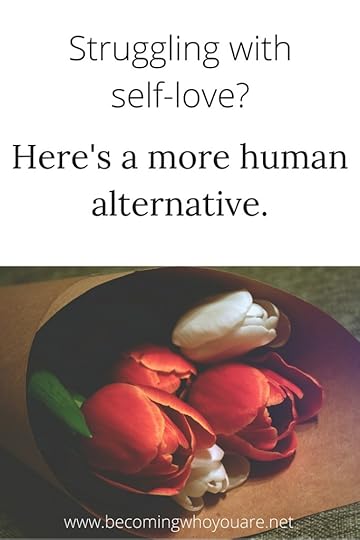
Image: Daria Sukhorukova
Join the Becoming Who You Are community for free access to our library of DIY personal development tools. Inside, you’ll find tools and resources on authenticity, goal-setting, self-kindness, journaling, creating meaning and purpose, and more.
Enter your email below for immediate access:
Email
*
First Name
The post Why I Don’t Talk About Self-Love appeared first on Becoming Who You Are.









February 6, 2016
Let’s All Do More of These 4 Things For a Brighter, Happier Year
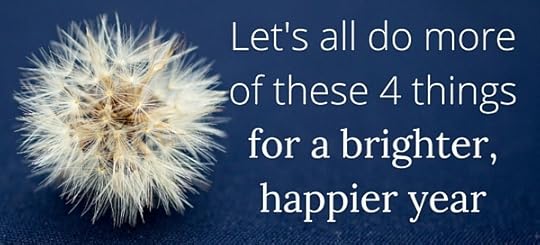
New Year’s Resolution season is well and truly over, which is just as well because any time of year is a great time to reflect on who we want to be. Recently, I’ve been thinking a lot about things I want to do more of—not in an achievement sense but in a “showing up as a whole-hearted human” way. I’m pretty sure I’m not the only one aiming to be more conscious about these things, so today I want to share four of the things I’ve come up with that will benefit us (and the people around us):
Let’s all do more of these 4 things for a brighter, happier year
1. Caring about what the right people think of us
One of the most common desires I hear as a coach is a version of “I wish I could stop caring so much about what other people think.” I get it: trying to keep everyone happy is exhausting and unhappy-making. But it’s also one of those ingrained drives. We’re social animals, we thrive with connection, so of course we care what people think. That’s not to mention the fact that other people’s perspectives can be very helpful in certain situations.
So the answer isn’t just not to care. Instead, it’s about focusing on what the right people think. These are the people we trust, respect, and want to build relationships with. This includes ourselves. The nosy old stranger in Starbucks or that ex-friend who has let you down more times than you care to remember? Not worth it. This is easier said than done, but I know I could start enjoying a brighter, happier year from tomorrow and save myself a lot of energy with this one.
2. Speaking up when we want to (and need to)
Speaking up includes everything from arguing for what we know to be true, to sending food back at a restaurant if they get the order wrong.
I know my temptation is to stay quiet in these situations and the story I tell myself is “I don’t want to make a fuss.” But making a request—or politely asking someone to stick to their original agreement—isn’t the same as making a fuss. Even then, sometimes making a fuss is warranted. No one is going to speak up for us, so let’s make sure we’re doing it for ourselves.
No one is going to speak up for us, so let’s make sure we’re doing it for ourselves.
Click To Tweet
3. Questioning things we read and share online
The internet is full of misguided wisdom, most of it well-meaning, some of it not. Most times I log on to social media, I see black and white growthspiration statements like “You only fail when you give up!” and similar.
I’m all for creating a set principles for living, but we want to make sure our principles are right. Most of these statements exist on a spectrum, not in black and white terms. Sometimes “giving up” is actually a good thing. There’s no point in guilting ourselves into staying on the wrong course.
Part of becoming who we are is about knowing when these principles apply, and when they potentially do more harm than good. The same goes for quotes and statements that, at some level, encourage us to stifle or dismiss our true feelings in the interest of being “grateful”, “positive”, or “kind.” We can be grateful for what we have, and still want to change some things. We can be positive and still acknowledge that our current situation is challenging us. We can be kind and say no. Emotions usually present as “X and Y,” not “X or Y.”
Finally, I also think it’s important to think about the source of what we’re sharing. After reading this, I no longer share quotes by David “Avocado” Wolfe. No one is perfect and we all make mistakes, but let’s think twice before we give free advertising to people who lack integrity and ethics.
4. Responding, rather than reacting
I wrote about this in this post, and it’s worth re-mentioning here. We cause ourselves so much unnecessary stress by assuming we know the definitive truth about other people’s intentions, thoughts and feelings, and then acting on those assumptions.
So let’s stop jumping to conclusions and reacting when we only have half the story. Let’s take responsibility for our feelings and behaviour. Let’s start assuming the best, taking a deep breath, and turning our reactions into responses.
None of these things are overnight quick fixes. They are all things that take time, conscious thought and commitment. But the more we practice them, the brighter our worlds will be.
What else are you going to start doing for a brighter, happier year? Leave a comment and share your thoughts.
Image: Danielle MacInnes
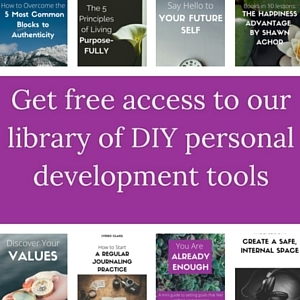 Want more? Join the Becoming Who You Are library and get access to free DIY personal development tools. Inside, you’ll find workbooks, audios, book summaries, and more content and resources based on psychology and practical personal growth for a fulfilling and meaningful life.
Want more? Join the Becoming Who You Are library and get access to free DIY personal development tools. Inside, you’ll find workbooks, audios, book summaries, and more content and resources based on psychology and practical personal growth for a fulfilling and meaningful life.
Enter your email below for immediate access (you’ll also receive weekly updates with useful info and special offers from Becoming Who You Are, and are free to unsubscribe at any time).
Email
*
First Name
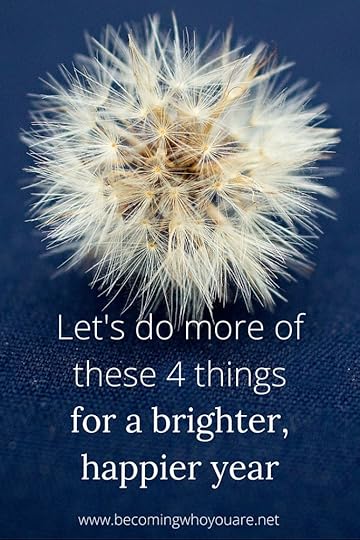
The post Let’s All Do More of These 4 Things For a Brighter, Happier Year appeared first on Becoming Who You Are.









January 26, 2016
When Was the Last Time You Wrote Your Own Eulogy?
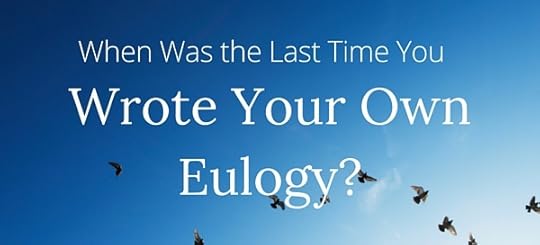
It might not be the first writing exercise that springs to mind, but writing your own eulogy is actually a valuable and worthwhile exercise. As Arianna Huffington explains in her book Thrive: The Third Metric to Redefining Sucess and Creating a Life of Well-being, Wisdom and Wonder:
“A eulogy is often the first formal marking down of what our lives were about—the foundational document of our legacy. It is how people remember us and how we live on in the minds and hearts of others. And it is very telling what we don’t hear in in eulogies. We almost never hear things like: “The crowning achievement of his life was when he made senior vice president.” or: “He increased market share for his company multiple times during his tenure.” Or: “She never stopped working. She ate lunch at her desk. Every day.”
In our daily lives, it’s all too easy to get caught up in the things that feel oh-so-important in the moment but are decidedly insignficant in the grand scheme of things. The little badges of honour that precariously prop up our ego, like always being the last one to leave the office. Our laser-like preoccupations with tiny things, like that last 5 pounds hanging around our waistline. The molehills that we turn into mountains, and all the times we tell ourselves “I’ll be happy when I’ve achieved X.”
Not that what we do doesn’t matter. It does, but only so far as it’s an expression of who we are.
What we do only matters if it’s a true expression of who we are.
Click To Tweet
Arianna continues: “Our eulogies are always about the other stuff: what we gave, how we connected, how much we meant to our family and friends, small kindnesses, lifelong passions, and the things that made us laugh…’Eulogies aren’t résumés,’ David Brooks wrote. “They describe the person’s care, wisdom, truthfulness and courage. They describe the million little moral judgements that emanate from that inner region.'”
Writing your own eulogy, hopefully many years ahead of time, helps you reconnect with that other stuff. It reminds us that we are indeed mortal and that every day we live is a day less we have left on this planet. It lifts us to a 20,000 foot view of our lives and inspires us with the bigger picture. It helps us see any gaps between who we want to be and who we actually are in our day-to-day lives right now.
Write Your Own Eulogy
Take 30 minutes today, imagine you’re writing as somebody else, and paint a vivid picture of what you want to be remembered for, the legacy you want to leave, and how you want to make the most of your life.
Once you’re done, come back, leave a comment and share your experience.
Read more:
a.eg-henryharrison-element-1,a.eg-henryharrison-element-2{-webkit-transition:all .4s linear; -moz-transition:all .4s linear; -o-transition:all .4s linear; -ms-transition:all .4s linear; transition:all .4s linear}.eg-jimmy-carter-element-11 i:before{margin-left:0px; margin-right:0px}.eg-harding-element-17{letter-spacing:1px}.eg-harding-wrapper .esg-entry-media{overflow:hidden; box-sizing:border-box; -webkit-box-sizing:border-box; -moz-box-sizing:border-box; padding:30px 30px 0px 30px}.eg-harding-wrapper .esg-entry-media img{overflow:hidden; border-radius:50%; -webkit-border-radius:50%; -moz-border-radius:50%}.eg-ulysses-s-grant-wrapper .esg-entry-media{overflow:hidden; box-sizing:border-box; -webkit-box-sizing:border-box; -moz-box-sizing:border-box; padding:30px 30px 0px 30px}.eg-ulysses-s-grant-wrapper .esg-entry-media img{overflow:hidden; border-radius:50%; -webkit-border-radius:50%; -moz-border-radius:50%}.eg-richard-nixon-wrapper .esg-entry-media{overflow:hidden; box-sizing:border-box; -webkit-box-sizing:border-box; -moz-box-sizing:border-box; padding:30px 30px 0px 30px}.eg-richard-nixon-wrapper .esg-entry-media img{overflow:hidden; border-radius:50%; -webkit-border-radius:50%; -moz-border-radius:50%}.eg-herbert-hoover-wrapper .esg-entry-media img{filter:url("data:image/svg+xml;utf8,#grayscale"); filter:gray; -webkit-filter:grayscale(100%)}.eg-herbert-hoover-wrapper:hover .esg-entry-media img{filter:url("data:image/svg+xml;utf8,#grayscale"); -webkit-filter:grayscale(0%)}.eg-lyndon-johnson-wrapper .esg-entry-media img{filter:url("data:image/svg+xml;utf8,#grayscale"); filter:gray; -webkit-filter:grayscale(100%)}.eg-lyndon-johnson-wrapper:hover .esg-entry-media img{filter:url("data:image/svg+xml;utf8,#grayscale"); -webkit-filter:grayscale(0%)}.esg-overlay.eg-ronald-reagan-container{background:-moz-linear-gradient(top,rgba(0,0,0,0) 50%,rgba(0,0,0,0.83) 99%,rgba(0,0,0,0.85) 100%); background:-webkit-gradient(linear,left top,left bottom,color-stop(50%,rgba(0,0,0,0)),color-stop(99%,rgba(0,0,0,0.83)),color-stop(100%,rgba(0,0,0,0.85))); background:-webkit-linear-gradient(top,rgba(0,0,0,0) 50%,rgba(0,0,0,0.83) 99%,rgba(0,0,0,0.85) 100%); background:-o-linear-gradient(top,rgba(0,0,0,0) 50%,rgba(0,0,0,0.83) 99%,rgba(0,0,0,0.85) 100%); background:-ms-linear-gradient(top,rgba(0,0,0,0) 50%,rgba(0,0,0,0.83) 99%,rgba(0,0,0,0.85) 100%); background:linear-gradient(to bottom,rgba(0,0,0,0) 50%,rgba(0,0,0,0.83) 99%,rgba(0,0,0,0.85) 100%); filter:progid:DXImageTransform.Microsoft.gradient( startColorstr='#00000000',endColorstr='#d9000000',GradientType=0 )}.eg-georgebush-wrapper .esg-entry-cover{background:-moz-linear-gradient(top,rgba(0,0,0,0) 50%,rgba(0,0,0,0.83) 99%,rgba(0,0,0,0.85) 100%); background:-webkit-gradient(linear,left top,left bottom,color-stop(50%,rgba(0,0,0,0)),color-stop(99%,rgba(0,0,0,0.83)),color-stop(100%,rgba(0,0,0,0.85))); background:-webkit-linear-gradient(top,rgba(0,0,0,0) 50%,rgba(0,0,0,0.83) 99%,rgba(0,0,0,0.85) 100%); background:-o-linear-gradient(top,rgba(0,0,0,0) 50%,rgba(0,0,0,0.83) 99%,rgba(0,0,0,0.85) 100%); background:-ms-linear-gradient(top,rgba(0,0,0,0) 50%,rgba(0,0,0,0.83) 99%,rgba(0,0,0,0.85) 100%); background:linear-gradient(to bottom,rgba(0,0,0,0) 50%,rgba(0,0,0,0.83) 99%,rgba(0,0,0,0.85) 100%); filter:progid:DXImageTransform.Microsoft.gradient( startColorstr='#00000000',endColorstr='#d9000000',GradientType=0 )}.eg-jefferson-wrapper{-webkit-border-radius:5px !important; -moz-border-radius:5px !important; border-radius:5px !important; -webkit-mask-image:url(data:image/png;base64,iVBORw0KGgoAAAANSUhEUgAAAAEAAAABCAIAAACQd1PeAAAAGXRFWHRTb2Z0d2FyZQBBZG9iZSBJbWFnZVJlYWR5ccllPAAAAA5JREFUeNpiYGBgAAgwAAAEAAGbA+oJAAAAAElFTkSuQmCC) !important}.eg-monroe-element-1{text-shadow:0px 1px 3px rgba(0,0,0,0.1)}.eg-lyndon-johnson-wrapper .esg-entry-cover{background:-moz-radial-gradient(center,ellipse cover,rgba(0,0,0,0.35) 0%,rgba(18,18,18,0) 96%,rgba(19,19,19,0) 100%); background:-webkit-gradient(radial,center center,0px,center center,100%,color-stop(0%,rgba(0,0,0,0.35)),color-stop(96%,rgba(18,18,18,0)),color-stop(100%,rgba(19,19,19,0))); background:-webkit-radial-gradient(center,ellipse cover,rgba(0,0,0,0.35) 0%,rgba(18,18,18,0) 96%,rgba(19,19,19,0) 100%); background:-o-radial-gradient(center,ellipse cover,rgba(0,0,0,0.35) 0%,rgba(18,18,18,0) 96%,rgba(19,19,19,0) 100%); background:-ms-radial-gradient(center,ellipse cover,rgba(0,0,0,0.35) 0%,rgba(18,18,18,0) 96%,rgba(19,19,19,0) 100%); background:radial-gradient(ellipse at center,rgba(0,0,0,0.35) 0%,rgba(18,18,18,0) 96%,rgba(19,19,19,0) 100%); filter:progid:DXImageTransform.Microsoft.gradient( startColorstr='#59000000',endColorstr='#00131313',GradientType=1 )}.eg-wilbert-wrapper .esg-entry-cover{background:-moz-radial-gradient(center,ellipse cover,rgba(0,0,0,0.35) 0%,rgba(18,18,18,0) 96%,rgba(19,19,19,0) 100%); background:-webkit-gradient(radial,center center,0px,center center,100%,color-stop(0%,rgba(0,0,0,0.35)),color-stop(96%,rgba(18,18,18,0)),color-stop(100%,rgba(19,19,19,0))); background:-webkit-radial-gradient(center,ellipse cover,rgba(0,0,0,0.35) 0%,rgba(18,18,18,0) 96%,rgba(19,19,19,0) 100%); background:-o-radial-gradient(center,ellipse cover,rgba(0,0,0,0.35) 0%,rgba(18,18,18,0) 96%,rgba(19,19,19,0) 100%); background:-ms-radial-gradient(center,ellipse cover,rgba(0,0,0,0.35) 0%,rgba(18,18,18,0) 96%,rgba(19,19,19,0) 100%); background:radial-gradient(ellipse at center,rgba(0,0,0,0.35) 0%,rgba(18,18,18,0) 96%,rgba(19,19,19,0) 100%); filter:progid:DXImageTransform.Microsoft.gradient( startColorstr='#59000000',endColorstr='#00131313',GradientType=1 )}.eg-wilbert-wrapper .esg-entry-media img{-webkit-transition:0.4s ease-in-out; -moz-transition:0.4s ease-in-out; -o-transition:0.4s ease-in-out; transition:0.4s ease-in-out; filter:url("data:image/svg+xml;utf8,#grayscale"); filter:gray; -webkit-filter:grayscale(100%)}.eg-wilbert-wrapper:hover .esg-entry-media img{filter:url("data:image/svg+xml;utf8,#grayscale"); -webkit-filter:grayscale(0%)}.eg-phillie-element-3:after{content:" ";width:0px;height:0px;border-style:solid;border-width:5px 5px 0 5px;border-color:#000 transparent transparent transparent;left:50%;margin-left:-5px; bottom:-5px; position:absolute}.eg-howardtaft-wrapper .esg-entry-media img,.eg-howardtaft-wrapper .esg-media-poster{filter:url("data:image/svg+xml;utf8,#grayscale"); -webkit-filter:grayscale(0%)}.eg-howardtaft-wrapper:hover .esg-entry-media img,.eg-howardtaft-wrapper:hover .esg-media-poster{filter:url("data:image/svg+xml;utf8,#grayscale"); filter:gray; -webkit-filter:grayscale(100%)}.myportfolio-container .added_to_cart.wc-forward{font-family:"Open Sans"; font-size:13px; color:#fff; margin-top:10px}.esgbox-title.esgbox-title-outside-wrap{font-size:15px; font-weight:700; text-align:center}.esgbox-title.esgbox-title-inside-wrap{padding-bottom:10px; font-size:15px; font-weight:700; text-align:center}
.minimal-light .navigationbuttons,.minimal-light .esg-pagination,.minimal-light .esg-filters{text-align:center}.minimal-light .esg-filterbutton,.minimal-light .esg-navigationbutton,.minimal-light .esg-sortbutton,.minimal-light .esg-cartbutton a{color:#999; margin-right:5px; cursor:pointer; padding:0px 16px; border:1px solid #e5e5e5; line-height:38px; border-radius:5px; -moz-border-radius:5px; -webkit-border-radius:5px; font-size:12px; font-weight:700; font-family:"Open Sans",sans-serif; display:inline-block; background:#fff; margin-bottom:5px}.minimal-light .esg-navigationbutton *{color:#999}.minimal-light .esg-navigationbutton{padding:0px 16px}.minimal-light .esg-pagination-button:last-child{margin-right:0}.minimal-light .esg-left,.minimal-light .esg-right{padding:0px 11px}.minimal-light .esg-sortbutton-wrapper,.minimal-light .esg-cartbutton-wrapper{display:inline-block}.minimal-light .esg-sortbutton-order,.minimal-light .esg-cartbutton-order{display:inline-block; vertical-align:top; border:1px solid #e5e5e5; width:40px; line-height:38px; border-radius:0px 5px 5px 0px; -moz-border-radius:0px 5px 5px 0px; -webkit-border-radius:0px 5px 5px 0px; font-size:12px; font-weight:700; color:#999; cursor:pointer; background:#fff}.minimal-light .esg-cartbutton{color:#333; cursor:default !important}.minimal-light .esg-cartbutton .esgicon-basket{color:#333; font-size:15px; line-height:15px; margin-right:10px}.minimal-light .esg-cartbutton-wrapper{cursor:default !important}.minimal-light .esg-sortbutton,.minimal-light .esg-cartbutton{display:inline-block; position:relative; cursor:pointer; margin-right:0px; border-right:none; border-radius:5px 0px 0px 5px; -moz-border-radius:5px 0px 0px 5px; -webkit-border-radius:5px 0px 0px 5px}.minimal-light .esg-navigationbutton:hover,.minimal-light .esg-filterbutton:hover,.minimal-light .esg-sortbutton:hover,.minimal-light .esg-sortbutton-order:hover,.minimal-light .esg-cartbutton a:hover,.minimal-light .esg-filterbutton.selected{background-color:#fff; border-color:#bbb; color:#333; box-shadow:0px 3px 5px 0px rgba(0,0,0,0.13)}.minimal-light .esg-navigationbutton:hover *{color:#333}.minimal-light .esg-sortbutton-order.tp-desc:hover{border-color:#bbb; color:#333; box-shadow:0px -3px 5px 0px rgba(0,0,0,0.13) !important}.minimal-light .esg-filter-checked{padding:1px 3px; color:#cbcbcb; background:#cbcbcb; margin-left:7px; font-size:9px; font-weight:300; line-height:9px; vertical-align:middle}.minimal-light .esg-filterbutton.selected .esg-filter-checked,.minimal-light .esg-filterbutton:hover .esg-filter-checked{padding:1px 3px 1px 3px; color:#fff; background:#000; margin-left:7px; font-size:9px; font-weight:300; line-height:9px; vertical-align:middle}
.eg-jackson-element-0{font-size:16px; line-height:22px; color:#000000; font-weight:400; padding:17px 17px 17px 17px ; border-radius:60px 60px 60px 60px ; background-color:rgba(245,245,245,1.00); z-index:2 !important; display:block; border-top-width:0px; border-right-width:0px; border-bottom-width:0px; border-left-width:0px; border-color:#ffffff; border-style:solid}.eg-jackson-element-1{font-size:16px; line-height:22px; color:#000000; font-weight:400; padding:17px 17px 17px 17px ; border-radius:60px 60px 60px 60px ; background-color:rgba(245,245,245,1.00); z-index:2 !important; display:block; border-top-width:0px; border-right-width:0px; border-bottom-width:0px; border-left-width:0px; border-color:#ffffff; border-style:solid}.eg-jackson-element-3{font-size:20px; line-height:30px; color:#000000; font-weight:600; display:inline-block; float:none; clear:both; margin:15px 0px 0px 0px ; padding:0px 0px 0px 0px ; border-radius:0px 0px 0px 0px ; background-color:rgba(255,255,255,0.15); position:relative; z-index:2 !important; font-family:"Open Sans"}.eg-jackson-element-5{font-size:12px; line-height:20px; color:#888888; font-weight:400; display:inline-block; float:none; clear:both; margin:0px 0px 0px 0px ; padding:0px 0px 0px 0px ; border-radius:0px 0px 0px 0px ; background-color:rgba(255,255,255,0); position:relative; z-index:2 !important; font-family:"Open Sans"; text-transform:uppercase}
.eg-jackson-element-0:hover{font-size:16px; line-height:22px; color:#000000; font-weight:400; border-radius:60px 60px 60px 60px ; background-color:rgba(238,238,238,1.00); border-top-width:0px; border-right-width:0px; border-bottom-width:0px; border-left-width:0px; border-color:#ffffff; border-style:solid}.eg-jackson-element-1:hover{font-size:16px; line-height:22px; color:#000000; font-weight:400; border-radius:60px 60px 60px 60px ; background-color:rgba(238,238,238,1.00); border-top-width:0px; border-right-width:0px; border-bottom-width:0px; border-left-width:0px; border-color:#ffffff; border-style:solid}.eg-jackson-element-5:hover{font-size:12px; line-height:20px; color:#000000; font-weight:400; border-radius:0px 0px 0px 0px ; background-color:rgba(255,255,255,0); font-family:"Raleway"; text-transform:uppercase}
.eg-jackson-element-0-a{display:inline-block; float:none; clear:none; margin:0px 10px 0px 0px ; position:relative}
.eg-jackson-element-1-a{display:inline-block; float:none; clear:none; margin:0px 0px 0px 0px ; position:relative}
.eg-jackson-container{background-color:rgba(255,255,255,1.00)}
.eg-jackson-content{background-color:#ffffff; padding:0px 0px 0px 0px; border-width:0px 0px 0px 0px; border-radius:0px 0px 0px 0px; border-color:transparent; border-style:none; text-align:center}
.esg-grid .mainul li.eg-jackson-wrapper{background-color:#eeeeee; padding:5px 5px 5px 5px; border-width:0px 0px 0px 0px; border-radius:0px 0px 0px 0px; border-color:transparent; border-style:none}
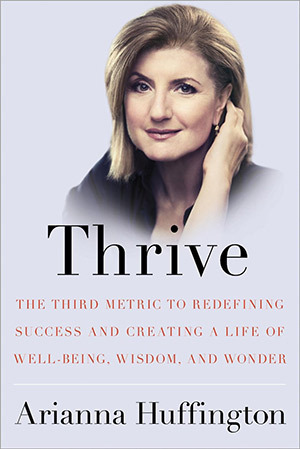
Thrive: The Third Metric to Redefining Success and Creating a Life of Well-being, Wisdom and Wonder
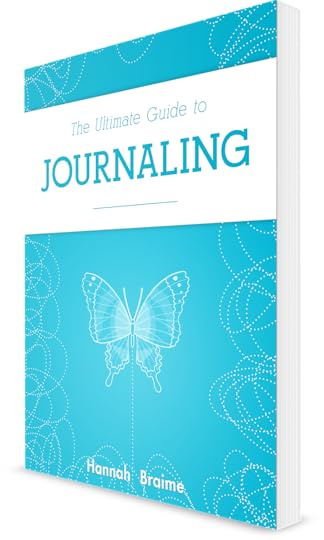
The Ultimate Guide to Journaling
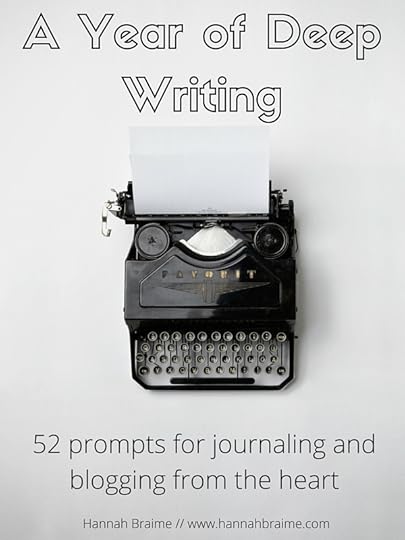
A Year of Deep Writing: 52 prompts for journaling and blogging from the heart
Image: Rowan Heuvel
January 4, 2016
The Best Books on Personal Development and Creativity from This Year
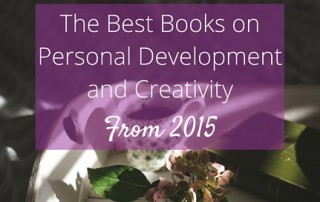
As the year comes to a close, I want to share some of the best books on personal development and creativity I’ve read this year. Since “best” is subjective, I’ve defined it here by a) how engrossed I was while reading, b) how much the book and its ideas stayed with me afterwards, and c) the positive impact the ideas had on my awareness, thoughts and behaviour.
My top 10 books on personal development and creativity from 2015
The Power of TED by David Emerald
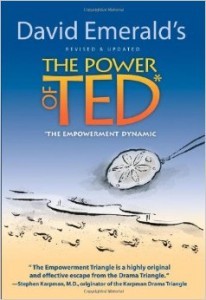 The Power of TED is one of my favourite books from this year. After recommending it in the summer, I also heard from a lot of Becoming Who You Are readers who loved it too.
The Power of TED is one of my favourite books from this year. After recommending it in the summer, I also heard from a lot of Becoming Who You Are readers who loved it too.
TED stands for The Empowerment Dynamic and describes a framework for relating to the world that helps us stop feeling like a victim (disempowered, helpless, at the mercy of external forces beyond our control) and start feeling like a creator (empowered, solution-focused, aware of the opportunities and possibilities to create the life we want). I made a series of short videos as an introduction to the key ideas in this book: Part 1, Part 2, Part 3.
Get your own copy of The Power of TED here.
Rising Strong by Brené Brown
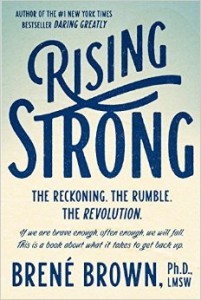 Rising Strong is the final book in the trilogy that started with The Gifts of Imperfection and Daring Greatly. It completes her key themes of vulnerability, compassion and living wholeheartedly by exploring how we “get back in the arena” after a fall and develop the resilience to live with rejection and perceived failure in all areas of life without resorting to defensivness or shutting ourselves off from our feelings.
Rising Strong is the final book in the trilogy that started with The Gifts of Imperfection and Daring Greatly. It completes her key themes of vulnerability, compassion and living wholeheartedly by exploring how we “get back in the arena” after a fall and develop the resilience to live with rejection and perceived failure in all areas of life without resorting to defensivness or shutting ourselves off from our feelings.
You can read my full review of Rising Strong here.
Get your own copy of Rising Strong here.
The Happiness Hypothesis: Finding Modern Truth in Ancient Wisdom by Jonathan Haidt
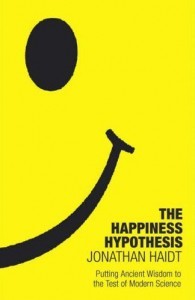 This is one of those books I know I’ll be returning to. It’s packed with information, insights and studies about big topics like happiness, growth and finding a sense of meaning in life.
This is one of those books I know I’ll be returning to. It’s packed with information, insights and studies about big topics like happiness, growth and finding a sense of meaning in life.
One of the things I appreciated most about this book is how it combines sayings and statements from ancients like Plato and connects them with relevant modern science. It’s an interesting and effective mix of ancient philosophy and practical advice.
Get your own copy of The Happiness Hypothesis here.
Mindset: The New Psychology of Success by Carol Dweck
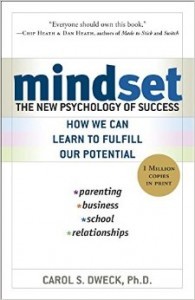 Like The Pursuit of Perfect (see below), this is one of those books that leaves you realising that most of what you were taught about success, achievement and progress when you were younger was actually more of a hindrance than a help.
Like The Pursuit of Perfect (see below), this is one of those books that leaves you realising that most of what you were taught about success, achievement and progress when you were younger was actually more of a hindrance than a help.
Dweck differentiates between what she calls a “fixed mindset” and a “growth mindset,” and makes the case that it’s our mindset that influences whether or not we succeed in life far more than our intelligence and skill. She also explains how our mindset influences how we approach every area of life, from work to relationships, parenting and more.
Get your copy of Mindset here.
Waking Up: A Guide to Spirituality Without Religion by Sam Harris
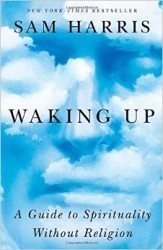 As someone who is not religious or new-agey but also believes the human experience is full of wonder and mystery (and has long wondered how that all fits together), Waking Up intrigued me.
As someone who is not religious or new-agey but also believes the human experience is full of wonder and mystery (and has long wondered how that all fits together), Waking Up intrigued me.
Sam Harris dives into the science of spirituality and goes into detail about research regarding meditation and how it is possible to have a spiritual experience and existence without believing in any kind of deity or higher power.
Get your copy of Waking Up here.
The Pursuit of Perfect: How to Stop Chasing Perfection and Start Living a Richer, Happier Life by Tal Ben-Shahar
[image error]The Pursuit of Perfect is one of my most-recommended books to coaching clients this year, mainly because the experience of reading it is like taking off a pair of sunglasses you didn’t even realise you were wearing.
Tal Ben-Shahar divides our approach to life into two broad categories: perfectionists and optimalists. He goes into a lot of detail about what perfectionism is, how it manifests, and why it is so destructive, and shares exercises and insights into the “optimalist” mindset; the healthier (and happier) alternative.
Even if you don’t consider yourself to be much of a perfectionist, I recommend giving this book a read—you might be surprised!
Get your copy of The Pursuit of Perfection here.
Big Magic: Creative Living Beyond Fear by Elizabeth Gilbert
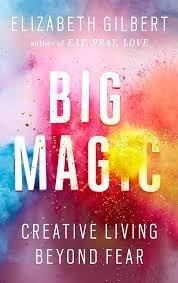 Big Magic is a collection of thoughts on the creative process that draw on Elizabeth Gilbert’s experience as a semi-well known writer who finds herself catapulted to international fame and success with a single book (Eat, Pray, Love). Faced with the knowledge that her most successful work is probably behind her and beset by both the good and the ugly that come with being a public figure, Big Magic is an exploration of what it means to be creative and how we can deal with some of the not-so-fun parts of the process, like fear, doubt and rejection. Some of her theories early on in the book might turn off more rationally-minded readers but it’s worth skipping forward for some no-nonsense, down-to-earth encouragement and guidance.
Big Magic is a collection of thoughts on the creative process that draw on Elizabeth Gilbert’s experience as a semi-well known writer who finds herself catapulted to international fame and success with a single book (Eat, Pray, Love). Faced with the knowledge that her most successful work is probably behind her and beset by both the good and the ugly that come with being a public figure, Big Magic is an exploration of what it means to be creative and how we can deal with some of the not-so-fun parts of the process, like fear, doubt and rejection. Some of her theories early on in the book might turn off more rationally-minded readers but it’s worth skipping forward for some no-nonsense, down-to-earth encouragement and guidance.
You can read my full review of Big Magic here.
Get your copy of Big Magic here.
Bird By Bird: Some Instructions on Writing and Life by Anne Lamott
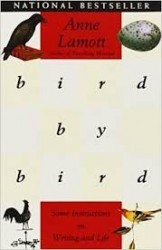 Confession time: I didn’t like this book as much as I thought I would. In retrospect, this is mostly because I’ve heard so many people say some variation of “OMG, the best book on writing ever” and I went in with intensely unrealistic expectations. As a result, I found it a little waffly, self-indulgent and underwhelming.
Confession time: I didn’t like this book as much as I thought I would. In retrospect, this is mostly because I’ve heard so many people say some variation of “OMG, the best book on writing ever” and I went in with intensely unrealistic expectations. As a result, I found it a little waffly, self-indulgent and underwhelming.
With that being said, Anne Lamott is deeply realistic about what the daily life of a writer actually looks like, the shadow side of writing (jealousy, rejection), and shares useful guidance and encouragement about how to find your voice, draw on your daily life for inspiration, and start writing. Even though it wasn’t quite what I had imagined, Bird by Bird is worth a read if you’re interested in craft of writing, especially fiction.
Get your copy of Bird by Bird here.
Motivation for Creative People: How to Stay Creative While Gaining Money, Fame and Reputation by Mark McGuinness
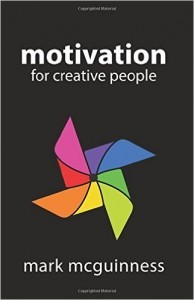 This book is a deep exploration of how we can keep ourselves motivated, especially when it comes to our creative work.
This book is a deep exploration of how we can keep ourselves motivated, especially when it comes to our creative work.
Motivation is something that is often seen as a mysterious external force that comes and goes on a whim, but Mark breaks it down into a four-piece framework, sharing tools and exercises along the way that help readers identify how they can buoy their motivation and regain control over their creative practice.
This book will be especially useful for people who want to combing (or are currently combining) their creative passions with their career.
Get your copy of Motivation for Creative People here.
Steal Like an Artist // Show Your Work – Austin Kleon
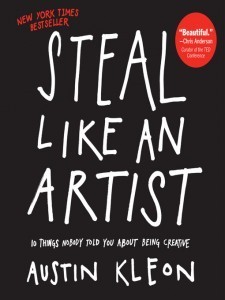 Technically, these are separate books but they complement each other so well I’m including them as one here. Both books are very quick reads but packed with useful principles that apply to any creative pursuit or project.
Technically, these are separate books but they complement each other so well I’m including them as one here. Both books are very quick reads but packed with useful principles that apply to any creative pursuit or project.
Steal Like an Artist is based on 10 things Austin Kleon knew when he was starting out as a writer and artist. It tears down the myth that art needs to be 100% original and instead shares the more realistic perspective that all art is influenced by other people’s ideas. It’s the ideal read if you want to spend more time on creative pursuits and need a little encouragement to get started.
Get your copy of Steal Like an Artist here.
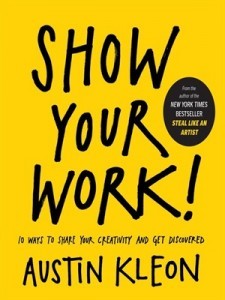 Show Your Work is the follow-up to Steal Like an Artist and explores the process of the next step after “stealing” and creating: sharing. The advice in this book ranges from the abstract to the very practical and is relevant and useful to anyone creating in the digital age.
Show Your Work is the follow-up to Steal Like an Artist and explores the process of the next step after “stealing” and creating: sharing. The advice in this book ranges from the abstract to the very practical and is relevant and useful to anyone creating in the digital age.
Get your copy of Show Your Work here.
The best of the rest
Here are some of my favourite reads from other genres:
Life After Life by Kate Atkinson
The Martian by Andy Weir
The Time Traveller’s Wife by Audrey Niffenegger
Stasiland: Stories from Behind the Berlin Wall
by Anna Funder
The Rational Optimist by Matt Ridley
What are your favourite books from 2015? Leave a comment and share your thoughts!
Image: Annie Spratt
December 17, 2015
#90: How to Create a When Life Works List
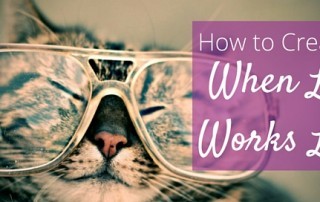
In this week’s podcast, I’m sharing another coaching tool called the When Life Works list. This one is particularly timely as the hectic season can challenge our usual self-care routines, and a lot of us are thinking about the fresh start and fresh set of possibilities that comes with a new year.
The When Life Works list is a tool that deepens our awareness of the activities that help us feel like the best version of ourselves. In this episode, you’ll discover more about what a When Life Works list is and how to create your own (if you’d like a free done-for-you worksheet you can fill out as you listen, see below). You’ll hear suggestions for your own list and find out how to translate your list into action.
This a simple but super useful tool, I hope you enjoy it!
Want to turbocharge your self-care? Discover how to create a When Life Works list
Click To Tweet
Get Your When Life Works List Worksheet
Want a ready-made worksheet you can fill in from your computer? Enter your email below to download.
[contact-form-7]
You’ll also receive updates from Becoming Who You Are and are free to unsubscribe at any time.
Say Hello
Hannah
Twitter: @hannahbraime
Facebook: The Becoming Who You Are Community
Website: becomingwhoyouare.net
Subscribe to the Podcast
Intro and outro: Stephanie Murphy
Image: Octavio Fossatti
December 15, 2015
4 of the Best Planners for a Happy and Healthy Year
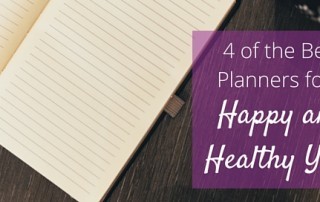
One of my favourite things about this time of year (except the secular parts of Christmas) is plannage! Over the years, I’ve experimented with finding the best planners for the job and, in this post, I want to share some of my favourites with you.
The new year is the perfect time to review how far you’ve come during your last trip around the sun and set intentions for the next. I am obsessed with planning, lists, and dreaming up new projects as a way to live as fully as possible and savour each moment the new year brings. The tools below are perfect for doing just that:
The Desire Map
Danielle LaPorte’s Desire Map series is a unique planner that approaches goals from the philosophy that it’s not so much the goal we’re chasing, but the feeling that working towards and achieving that goal will give us.
So why not get clear on how we want to feel in our day-to-day lives and then map out our actions around those feelings?
That’s what the desire map is about. As well as an ebook, workbooks and audiobook, you can also get journals, additional audios and even an app based on The Desire Map process.
I’ve used the Desire Map the last couple of years to set intentions for the year ahead and love it!
Daily Greatness Planner
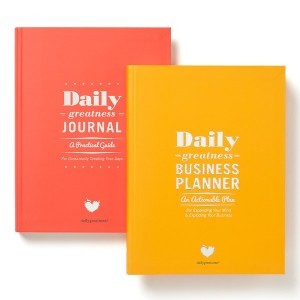 Daily Greatness is founded on the idea thatHow we start our days determines how we spend our days. How we spend each day determines our future.
Daily Greatness is founded on the idea thatHow we start our days determines how we spend our days. How we spend each day determines our future.
I use the Daily Greatness Business Planner to manage my business projects and goals, plan each quarter and manage my time each day and will continue to do so in 2016. Business-wise, this is one of the best planners I’ve found.
DG also make beautiful journals for everyday use, training plans (perfect for fitness goals), yoga journals and more.
Create Your Shining Year
Leonie Dawson’s Create Your Shining Year planners aren’t just amazing tools for reviewing the past year and planning for the year ahead, they are also works of art! Each page is custom designed and perfect for you if you like planners that have a DIY, artsy feel.
I’ve used the life planners since 2010, adding the business planners into the mix too in later years. This year, I’m going to stick to what I already have, but still highly recommend both planners for a day of dreaming and scheming.
Looking for the perfect planner for 2016? Check out these four favourites
Click To Tweet
Make Your Own
Finally, if you want to get creative, why not make your own planner? This way, you can create something tailored to your needs, goals and priorities. You can find plenty of printables online or check out my DIY planners and journals Pinterest board for more ideas.
What are your best planners?
What are your favourite planners for reviewing, setting goals and staying on track? Leave a comment and share your suggestions!
Image: Negative space
December 7, 2015
Make 2016 Your Year is Here!
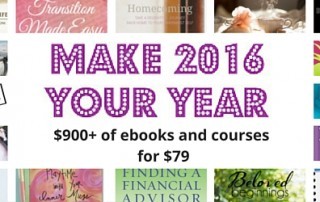
As the year draws to a close, you’re probably thinking about what you’d like to experience and create in your life during 2016. If so, you’ll love what I have to share with you today: Make 2016 Your Year is your toolkit for transforming 2016 into your most conscious and creative year yet.
Covering the important areas of life, including purpose, finance, relationships self-love, creativity,travel and more, whatever your big dreams and goals are for next year, we’ve got you covered.
Bought individually, these 17 products cost over $900, but until 10am EST on Thursday (10th December), you can download them for just $79 and get a head start on making 2016 awesome.
Make 2016 Your Year contains:
Board of Your Life by Tanya Geisler (value $150)
Living on Purpose by Jacob Sokol (value $97)
Transition Made Easy by Ashley Wilhite (value $49)
The Fierce Love Course by Molly Mahar (value $97)
Beloved Beginnings by Vivienne McMaster (value $29)
The Wanderlust Workbook by Sarah Von Bargen (value $15)
Homecoming: Take a Delightful Journey Back Home to Your Innermost Self by Cigdem Kobu (value $97)
How to Start Journaling for Personal Growth by Hannah Braime (value $31)
Body, Mind and Soul Cleanse by Anne-Sophie Reinhardt (value $69)
She Is Radiant: The Collection by Claire Baker (value $39)
Rewired Workshop Bundle by Mara Glatzel (value $99)
21 Days to Declutter Your Life by Mari McCarthy (value $23)
Playtime With Your Inner Muse by Jennifer Lee (value $27)
The Journal Writer’s Guide to Staying Started by Nathan Ohren (value $79)
Finding a Financial Advisor You Can Trust by Barbara Stanny (value $10)
Be Your Own Hero by Hannah Braime (value $40)
The Shift Plan by Kate Courageous (Bonus)
A suggested lesson plan so you can work through each “module” of the course without feeling overwhelmed (Bonus)
For more info on each of these products, click here. I can’t wait to dive into all these amazing books and courses: will you be joining me?
Click the button below to get your copy and let’s make 2016 fabulous!
Do you know someone who would love this bundle? You can also purchase Make 2016 Your Year as a gift.
Once you’ve checked out via PayPal, you’ll be redirected to a form where you can enter the name and email address of the recipient.
Remember, this bundle is only available until 9am PST // 9am EST // 1pm GMT on Thursday 10th December, so grab your copy today!
Questions? Get in touch.

